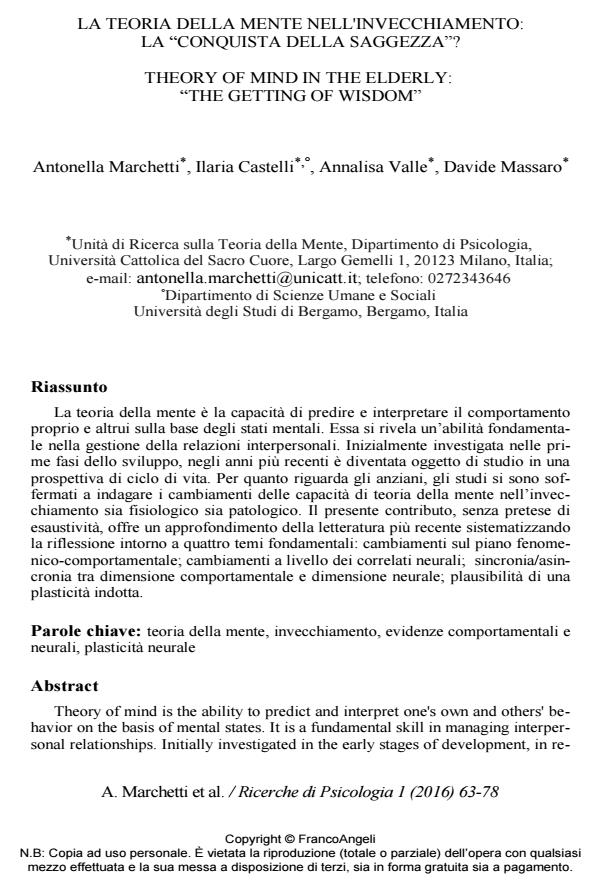Theory of mind in the elderly: "the getting of wisdom"
Journal title RICERCHE DI PSICOLOGIA
Author/s Antonella Marcheti, Ilaria Castelli, Annalisa Valle, Davide Massaro
Publishing Year 2016 Issue 2016/1
Language Italian Pages 16 P. 63-78 File size 78 KB
DOI 10.3280/RIP2016-001005
DOI is like a bar code for intellectual property: to have more infomation
click here
Below, you can see the article first page
If you want to buy this article in PDF format, you can do it, following the instructions to buy download credits

FrancoAngeli is member of Publishers International Linking Association, Inc (PILA), a not-for-profit association which run the CrossRef service enabling links to and from online scholarly content.
Theory of mind is the ability to predict and interpret one's own and others' behavior on the basis of mental states. It is a fundamental skill in managing interpersonal relationships. Initially investigated in the early stages of development, in re cent years it has become a research topic in a lifespan perspective. As for the elderly, studies have been focusing on the changes in theory of mind both in the physiological and in the pathological aging. This paper, without wanting to be exhaustive, offers an insight into the most recent literature systematizing the reflection around four key themes: changes from a behavioral perspective; understanding of the neural correlates; synchrony/asynchrony between neural and behavioral dimensions; plausibility of an induced plasticity.
Keywords: Theory of mind, elderly, behavioral and neural correlates, neural Plasticity
- Assessing metarepresentational abilities in adolescence: an exploratory study on relationships between definitional competence and theory of mind Alessia Cornaggia, Federica Bianco, Ilaria Castelli, Carmen Belacchi, in Frontiers in Psychology 1456432/2024
DOI: 10.3389/fpsyg.2024.1456432 - Humanity in Psychology Antonella Marchetti, Edoardo Alfredo Bracaglia, pp.179 (ISBN:978-3-031-30639-6)
Antonella Marcheti, Ilaria Castelli, Annalisa Valle, Davide Massaro, La teoria della mente nell'invecchiamento: la "conquista della saggezza"? in "RICERCHE DI PSICOLOGIA " 1/2016, pp 63-78, DOI: 10.3280/RIP2016-001005